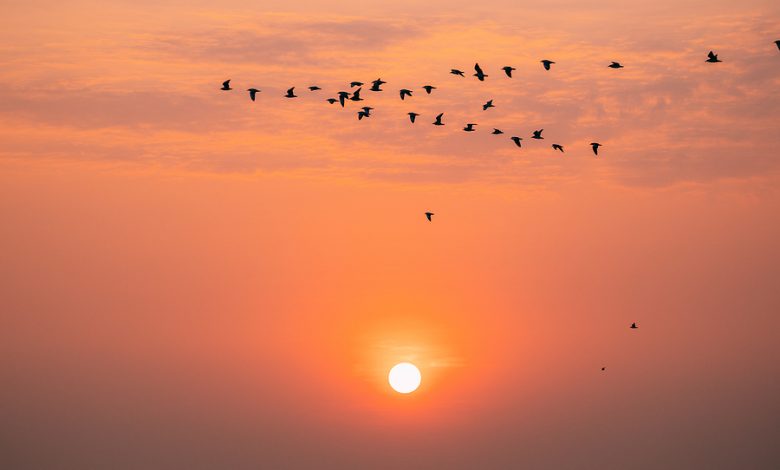
Since 1993, World Migratory Bird Day (WMBD) has been educating the public about the importance of migratory bird conservation. Over 100 species of birds that nest in the Midwest, and many more that fly through during migration, are considered Neotropical migrants, meaning they breed in North America and spend the winter in Mexico, Central America, or South America. WMBD is a chance to celebrate our shared migratory birds across countries and continents. Each year WMBD focuses on a single theme of migratory bird conservation and in 2022 the theme is “Dim the Lights for Birds at Night”.
Over 80% of North America’s migratory birds migrate at night, and artificial light can impact their journey. Migrating at night has many advantages for a bird. Night skies are calmer and cooler than daytime skies which makes their very long journeys easier and lowers their risk of overheating. Nocturnal migrants are also better able to avoid predators. Many birds navigate using the stars and moon as a compass, but light pollution can interrupt this navigation. Light pollution from homes, business, sports complexes, and industrial areas often disorients birds or attracts them to the light, slowing their migration and threatening their survival. Light pollution is especially dangerous because it causes many birds to collide with buildings during migration, resulting in hundreds of millions of bird fatalities in North America each year. Light pollution is increasing by 2% each year, but citizens and their communities can help reduce light pollution and in turn protect migrating birds.
Here are a few actions you can take to reduce light pollution and protect migratory birds:
- Turn off non-essential nighttime lights and use timers or motion detectors on essential lights to keep the usage to a minimum. (This helps save energy and money too!)
- Changing the color of your lights from cool (green and blue) to warm (red and yellow) has been shown to reduce disturbances to migrating birds. (Tip: Light color is measured in kelvins- the lower the number, the warmer the light.)
- Diverting lights downwards using lighting shields can help stop excess light from leaking into the night sky.
- Talk with your local government officials and community organizations and businesses about light ordinances or ways to reduce light pollution as a community, especially during spring and fall migration times.
- Visit https://www.audubon.org/
lights-out-program to learn more!
This year (2022), World Migratory Bird Day takes place in the U.S. and Canada on May 14th during the peak of spring migration and is celebrated in Mexico, Central and South America, and the Caribbean on October 8th during fall migration. To learn more about World Migratory Bird Day and associated events visit www.migratorybirdday.org




